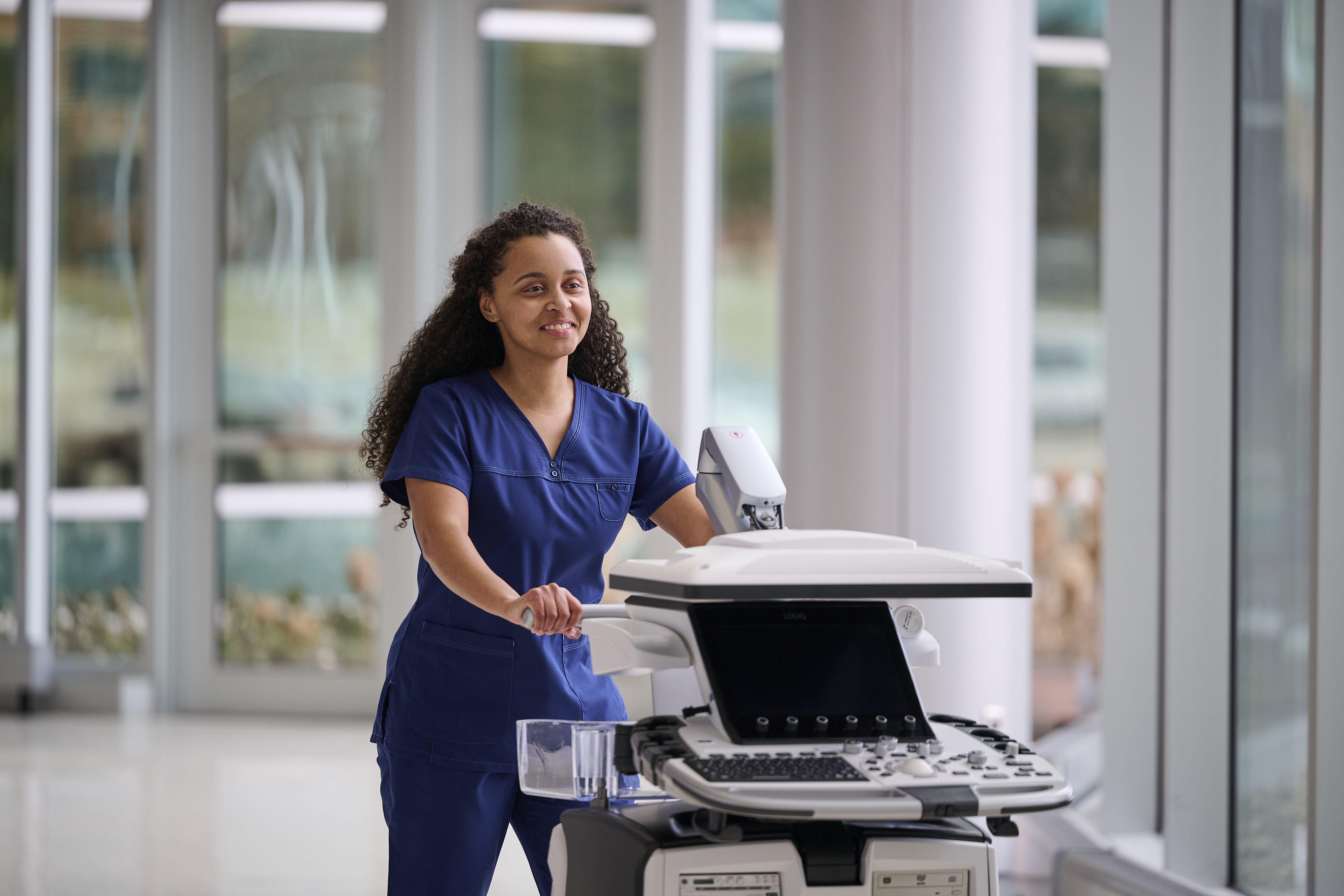The ultrasound market has been marked by rapid expansion, driven by factors such as the aging population, increased cancer rates, and the prevalence of cardiovascular diseases. Along with this demand, there has bloomed rapid technological advancements.
These advancements pose challenges for sonographers, such as constantly adapting and learning new technologies. The increasing use of ultrasound across many medical disciplines is, in parallel, increasing the complexity of use and machine settings.
With all challenges, growth opportunities emerge. Adaptive technology can not only support learning but also speed treatment. This article and the accompanying eBook, Sonographer Pain Points, aim to explore the obstacles faced by sonographers and provide valuable insights on how to transform these challenges into growth opportunities. The expertise of ultrasound sonographers paired with continuously improving technology is shaping the future of medical diagnostics.
Staffing and Labor in Sonography
In the United States, there are currently around 65,000 sonographers.1 While these numbers are robust, the healthcare industry needs more trained professionals to keep pace with patients' needs. The Bureau of Labor Statistics forecasts that United States hospitals and health systems will need an additional 27,600 sonographers by 2024.2 However many tenured, experienced sonographers are opting to retire.3 Reasons include, but are not limited to, increasing workloads and physical pain and joint stress resulting from the repetitive motions required.
Between a smaller workforce and an aging general population that requires more testing, each sonographer is responsible for a hefty volume of exams. Alongside this, ultrasound exams have become more complex. As a result, many sonographers are experiencing burnout, reducing the population of skilled labor further while demand only continues to rise.4
The physical burden sonographers face is not unknown. Joint discomfort from fingers up through shoulders from repetitive motions is all too common. Fortunately, newer ultrasound systems are designed to be more ergonomically friendly. Many include electric lift functions that allow ultrasound sonographers to configure the height and orientation of the machine to their personal preferences. This allows the ultimate in freedom of movement and customizable screen placement to reduce joint stress and adapt to the individual needs of clinicians and patients alike.
Learn more: View the Sonographer Pain Points Ebook.
Experience and Training
Although perfecting ultrasound skills does take time, technological ultrasound advancements are helping newer sonographers gain the confidence they need by accelerating training through feedback. By additionally leveraging artificial intelligence (AI), newer machines offer automated measurements—particularly in cardiovascular, abdominal, breast, and fetal imaging. Post-exam quality checks offer immediate feedback on accuracy and technique that can help sonographers improve their work performance.
In addition, newer ultrasound systems provide educational courses that accompany the advanced equipment, which can allow newer ultrasound sonographers to rapidly build skills. These modules offer instruction on machine operation as well as offering clinical guidance for a wide variety of exams.
Collaboration and Workflow
For many sonographers, collaborating with a colleague is a regular aspect of the work. Having a second set of eyes to examine an image or being able to ask a question about an imaging technique could give sonographers confidence, streamline the imaging process, and potentially prevent mistakes or missed findings. By building collaboration abilities into the technology this can become a seamless, speedy process, rather than an interruptive delay.
Smooth collaboration is one aspect of the modern workflow. Others are features such as expanded fields of view, screen duplication, remote screen monitoring, frequent use keys prominently available, and pre-populated reporting fields. Each of these can reduce completion times of exams as well as improving sonographer workflow.
With the increased workload placed on sonographers this combination of easy collaboration and optimized workflow allows for more time performing ultrasounds and less time on waiting and button clicking.
Conclusion
Without question, ultrasound technology is advancing rapidly. Enhanced images allow for better patient care, but ultrasound technology is more than just an image. The use and utility of new technologies for the sonographer must be considered with all advancements. Improved ergonomic design, improved reporting, improved workflow, improved collaboration, and improved feedback are all vital aspects to consider. GE HealthCare Ultrasound is designing technology to support the sonographers who work diligently to care for so many.
Learn more: View the Sonographer Pain Points Ebook.
REFERENCES:
1. Songrapher demographics and statistics in the US. Zippia. https://www.zippia.com/sonographer-jobs/demographics/. Accessed Aug. 11, 2023.
2. Murphey S. Work related musculoskeletal disorders in sonography. Society of Diagnostic Medical Sonography. 2021. https://www.sdms.org/docs/default-source/Resources/work-related-musculoskeletal-disorders-in-sonography-white-paper.pdf?sfvrsn=8. Accessed Aug. 11, 2023.
3. Fleishon, Howard B. "The Radiology Labor Shortage." The Radiology Labor Shortage | American College of Radiology. Accessed August 17, 2023. https://www.acr.org/Practice-Management-Quality-Informatics/ACR-Bulletin/Articles/March-2022/The-Radiology-Labor-Shortage.
4. Quinton AE, Walkley D, Younan K, et al. Burnout in the sonographic environment: The identification and exploration of the causes of sonographer burnout and strategies for prevention and control. Sonography. December 2022; Vol. 9(4): 175-185. https://doi.org/10.1002/sono.12333.
JB28090XX

